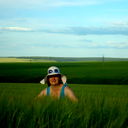Комнатные растения
Напишите пожалуйста описание розы на английском языке...
The rose - the collective name of the species and cultivars of the representatives of the Rose (lat. Rósa) grown man. Most varieties of roses were obtained as a result of a long selection by repeated repeated crosses and selection. Some varieties are forms of wild species.
Most of them are shrubs 1-2 m tall with erect or slightly drooping branches. There are species with very long, creeping along the ground or clinging to the trunks and branches of adjacent plants, rising to a considerable height shoots. Some grow in the form of thick, low bushes - pillows, very deco istrative during flowering. The leaves are pinnate, with elliptical or ovate, sharply serrated leaves, with two leaf-like stipules, partly adnate to the base of the petiole. The flowers are large, fragrant, bisexual, solitary or aggregated in clusters. Flower size from 1 to 12 cm in diameter. Sepals 5. Corolla svobodnolepestny formed, usually reversible oserdtsevidnymi five petals of pink, red, dark maroon, white or yellow. Stamens many, many and pestles, located on the inner wall of the concave receptacle. Sometimes there are wild roses flowers with more than five petals, with the additional lobes becomes part of the stamens or pistils. Thus there are semi-double or double flowers. In some cases, the number of petals can be very large (up to 180 at a rose wrinkled). Double flowers are usually larger and decorative simple.
Rosehip most types of cold and temperate zones in bloom for a short time - from May to July. Evergreen subtropical wild roses bloom almost continuously.
The fruits ripen in August - September, gradually acquiring yellow, sharlahovo red or black-and-brown color and remain on the branches until winter. Overgrown receptacle (Hypanthium) fleshy, juicy, berry-like. Inside it concluded a large number of fruitlets - nuts angular shape with a slightly pointed tip. The inner wall of the hypanthium covered with long bristly hairs.
This is easily cultivated plants are widely used in green building, in particular, to create soil conservation plantings. Drought-resistant and undemanding to soil conditions. Most kinds of light-requiring, grow well in moderately moist, loamy soils, can not tolerate waterlogging. Propagate by seeds and vegetatively - when diluted so-called park roses, the most ornamental species of wild roses and garden forms with double flowers. Garden forms are also propagated by dividing the bush, suckers, layering, stem and root cuttings, cultural varieties of roses - grafting.
Wild Rose, which gave rise to more than 200 thousands of varieties of beautiful roses, live on the earth about 40 million years, and much of that time in friendship with the man. They brought a lot of good people and a wonderful gift - a beautiful and fragrant, noble rose. However, wild roses are not inferior in beauty and fragrance garden many cultural varieties. They are worthy of the most widely used in landscaping our cities. Among the huge variety of ornamental plants roses are the greatest love. Very few plants can match with the richness of forms, color of flowers, fragrance, abundance and duration of flowering. Rose - one of the most ancient cultures. They are grown from time immemorial. They are pleasing to the eye, inspire courage and play a significant role in the aesthetic education. A huge variety of cultivars and hybrids are widely used in gardening construction. Hedge and stam - for flower beds and parterres, growing over the tracks and the group landing in the foreground; climbing species and varieties - for vertical gardening. The variety of colors and structure of the flower, not the same timing of flowering of them allow you to create highly artistic, decorative compositions, moreover, they bloom at a time when most of the trees and bushes bloomed, and a color palette of roses inimitable.
Rosehip most types of cold and temperate zones in bloom for a short time - from May to July. Evergreen subtropical wild roses bloom almost continuously.
The fruits ripen in August - September, gradually acquiring yellow, sharlahovo red or black-and-brown color and remain on the branches until winter. Overgrown receptacle (Hypanthium) fleshy, juicy, berry-like. Inside it concluded a large number of fruitlets - nuts angular shape with a slightly pointed tip. The inner wall of the hypanthium covered with long bristly hairs.
This is easily cultivated plants are widely used in green building, in particular, to create soil conservation plantings. Drought-resistant and undemanding to soil conditions. Most kinds of light-requiring, grow well in moderately moist, loamy soils, can not tolerate waterlogging. Propagate by seeds and vegetatively - when diluted so-called park roses, the most ornamental species of wild roses and garden forms with double flowers. Garden forms are also propagated by dividing the bush, suckers, layering, stem and root cuttings, cultural varieties of roses - grafting.
Wild Rose, which gave rise to more than 200 thousands of varieties of beautiful roses, live on the earth about 40 million years, and much of that time in friendship with the man. They brought a lot of good people and a wonderful gift - a beautiful and fragrant, noble rose. However, wild roses are not inferior in beauty and fragrance garden many cultural varieties. They are worthy of the most widely used in landscaping our cities. Among the huge variety of ornamental plants roses are the greatest love. Very few plants can match with the richness of forms, color of flowers, fragrance, abundance and duration of flowering. Rose - one of the most ancient cultures. They are grown from time immemorial. They are pleasing to the eye, inspire courage and play a significant role in the aesthetic education. A huge variety of cultivars and hybrids are widely used in gardening construction. Hedge and stam - for flower beds and parterres, growing over the tracks and the group landing in the foreground; climbing species and varieties - for vertical gardening. The variety of colors and structure of the flower, not the same timing of flowering of them allow you to create highly artistic, decorative compositions, moreover, they bloom at a time when most of the trees and bushes bloomed, and a color palette of roses inimitable.
Зайди в интернет найди описание розы и просто переведи на анг язык через переводчик
Не ужели это так трудно
Не ужели это так трудно
Похожие вопросы
- купила живые розы, но не знаю как за ними ухаживать. напишите пожалуйста инструкцию. напишите пожалуйста инструкцию
- Подскажите, пожалуйста, названия цветов. Кто какие знает-напишите, пожалуйста...
- Скажите пожалуйста, купила розы домашние
- Напишите пожалуйста понятным языком, как размножать Орхидею Фаленопсис
- описание розы (красивое)
- Напишите, пожалуйста, названия цветов.
- Помогите спасти кактус!!! Пожалуйста описание проблемы и фото внутри!
- Напишите, пожалуйста, название этого комнатного растения
- Напишите пожалуйста как ухаживать вот за этими кактусами?
- Подскажите, пожалуйста, у розы опадют листья и желтеют. Что с ней происходит?



